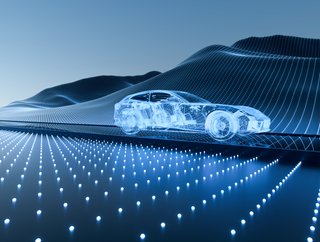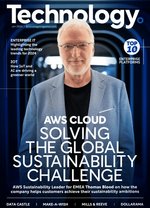How IoT electrification and AI enables a greener world

The electrification of road vehicles worldwide is growing quickly. In fact, for the first time ever, more than half of car buyers recently said their next purchase would be an electric or hybrid model.
According to a report by IEA, there are about 450 EV models on the market today, more than double the number available in 2018. The affordability of electric vehicles may be improving, but it isn’t yet where it needs to be for mass adoption.
One of the barriers to EV adoption is of course that, unlike traditional cars, EVs must be charged in order to function. This can take as little as 20 minutes up to around 30 hours, depending on the type of charger the EV driver is using.
As Jon Asmussen, Senior Director of Business Development at KORE, explained to EV Magazine recently, many EV owners opt to charge at home, simply plugging in overnight and waking up for the office commute with a full battery the next day. “However, some drivers don’t have access to a home charger, so publicly-available EV charge points can now be found all over – from offices, malls, and gyms to road-side charge points between cities. In fact, there are now 2.3 million charging stations worldwide.”
Crucial for addressing urban challenges, the Internet of Things (IoT) plays a pivotal role in the success of smart infrastructure and cities, from water and electricity, traffic flow and parking.
And, thanks in part to IoT solutions, the EV charging industry is accelerating and being reshaped, bringing the next wave of innovation to the market.
IoT is creating intuitive connections to the grid
With the boom in EVs comes a rising strain on every city’s electricity grid. As Asmussen describes, all those cars need power and all those cars take time to charge. “Of course, thousands of new vehicles charging at the same time increases the load on electricity distribution networks, especially as they all tend to charge at night,” he says.
When cities reach 50% EV ownership, as many are planning to do, night-time charging could lead to a 25% surge on the grid. For power grids to remain stable, this must be managed carefully.
“IoT software connects with charge plugs and the EV driver’s apps, so CPOs can start to manage and predict charging activity,” Asmussen explains. “Energy suppliers can use this data to manage their output. This way, data-driven operation of both infrastructures enables CPOs to effectively manage the demand on the grid and ensure that all charging activity remains within capacity.
“Interestingly, IoT charging is also helping EV car manufacturers on the journey to vehicle-to-grid (V2X) charging. Here, energy flows bi-directionally from the EV to the grid and back. This enables EVs to hold energy and push it back to the grid when needed to manage spikes in electricity demand. An IoT software would manage this activity, not only ensuring that drivers have a fully charged car when needed, but also that the car is supporting the grid when not in use by its driver.”
The role of generative AI
Perhaps the hottest topic of 2023 was generative AI and it’s almost impossible to visualise an aspect of life or business unsupported by such a highly intelligent technology. With today’s EVs becoming increasingly intelligent, gen AI will play a key role in enabling autonomous driving, intuitive cabin experiences and reducing the cost of driving.
Uncovering the use case for gen AI in the most intelligent vehicles the industry has ever seen, Editor in Chief of Sustainability Magazine, Tom Swallow, speaks with Thomas Mueller, VP, CTO and Global Automotive Lead at Wipro on the technology’s role in the EV world.
“We have been using AI and machine learning quite successfully for over a decade to embed technology in automotive,” he comments. “Particularly everything that you see today, including driver assistance technology, leverages machine learning and AI models in some shape or form, and the evolution now to what has been the generative part of it.
“With electric and hybrid, you obviously have the inevitable range anxiety that people carry forward. Range anxiety can only be addressed by putting in bigger batteries, which counter feeds the purpose.
“We have the ability to bring what we call intent and context into the product with AI that sits in the vehicle and it sits outside the vehicle. This is not specific to a car, it can be a truck, van, or even a two-wheeler. If the product has the ability to aggregate information pertaining to its users, whether it's the driver or its passengers, we can improve the overall user experience.”
IoT and electrification: The business growth opportunity
According to a report by Ericsson, as consumers, governments, and the automotive industry look toward a more sustainable and efficient alternative to fossil-fueled vehicles, EV charging providers recognise a business growth opportunity.
According to Ericsson’s IoT Lead Jens Erler, balancing an electricity grid that carries a lot of renewable energy requires buffering capabilities. “A large fleet of electric vehicles represent exactly such a substantial buffering capability. The V2X market was somewhat dormant in recent years, but we expect it now to move towards a commercially profitable business in the slipstream of a surging electric vehicle market,” he said.
“Today, the cheapest power is at night. As more solar power is put on the grid, however, this will change. When this happens, power prices will flip, and the 8am-3pm period may become the cheap power while night becomes more expensive, since it can’t come from solar and must come from storage, nuclear, hydro, wind or fossil.
“An interesting option is to put that extra power into cars. Unlike many other loads on the power grid, cars can be quite flexible about when they take the power – as long as an intelligent charging management system ensures that the mobility needs of electric car users are met at any point in time. That means, once plugged in, they will charge opportunistically when there is a surplus, including from solar and from wind.
“In the end, all EV charging service providers are in some form of energy management business, and we see some of these players now investigating business models including a participation in the electricity spot market, which would allow for additional revenue generation.”
**************
Make sure you check out the latest edition of Technology Magazine and also sign up to our global conference series - Tech & AI LIVE 2024
**************
Technology Magazine is a BizClik brand







